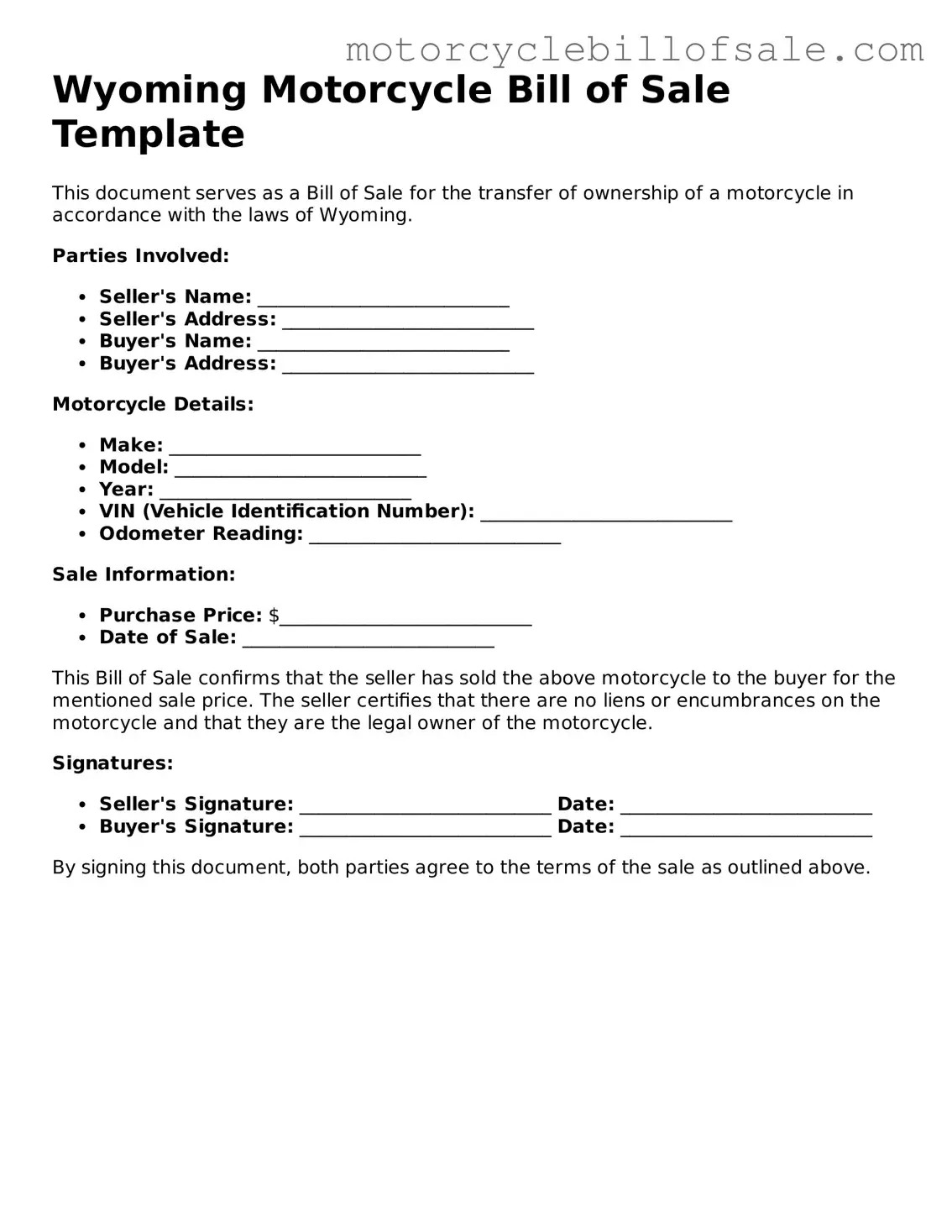Common mistakes
Filling out a Motorcycle Bill of Sale in Wyoming can seem straightforward, but many individuals make common mistakes that can lead to complications down the road. One frequent error is failing to include all necessary information about the motorcycle. Details such as the Vehicle Identification Number (VIN), make, model, and year are crucial. Without this information, the document may not serve its intended purpose.
Another common mistake is neglecting to provide accurate personal information for both the buyer and seller. Names, addresses, and contact information should be clearly stated. If any of this information is incorrect or incomplete, it could create issues when registering the motorcycle or transferring ownership.
Many people also forget to indicate the sale price of the motorcycle. This figure is not just a formality; it can affect sales tax calculations and future ownership disputes. Leaving this section blank or writing an ambiguous amount can lead to misunderstandings later on.
Additionally, some individuals overlook the importance of signatures. Both the buyer and seller must sign the Bill of Sale to validate the transaction. A missing signature can render the document ineffective, leaving both parties in a precarious situation.
Another mistake is failing to date the document. A Bill of Sale should always include the date of the transaction. This detail is essential for establishing the timeline of ownership and can be critical in case of disputes or legal issues.
People sometimes use vague language when describing the condition of the motorcycle. Instead of simply stating “used” or “in good condition,” it’s better to provide a more detailed account. This can help set clear expectations and reduce the likelihood of disputes regarding the motorcycle's condition later on.
Some buyers and sellers forget to keep copies of the Bill of Sale. Having a record of the transaction is vital for both parties. It serves as proof of ownership and can be important for future reference, especially if any issues arise.
Another common oversight is not checking local requirements. While the Bill of Sale is a standard document, certain counties or municipalities in Wyoming may have specific regulations or forms. Failing to adhere to these local requirements can complicate the registration process.
In some cases, individuals may not realize that the Bill of Sale is not a substitute for a title. While it is an important document, it does not replace the need for a proper title transfer. Ensuring that both documents are completed and submitted is crucial for a smooth transaction.
Finally, many people rush through the process. Taking the time to review the completed form can prevent many of these mistakes. A careful review ensures that all information is accurate and complete, ultimately making the transaction smoother for everyone involved.
